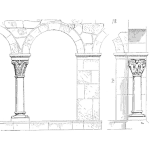
The 20th Century saw maintenance strategy evolve from corrective, predictive and preventive maintenance to reliability maximization. During the 21st century maintenance will disappear and be replaced with risk-free equipment operation where no failures occur. The first steps taken by LRS Consultants toward building risk-free businesses and riskless operational processes was the invention of the Plant Wellness Way “system-of-reliability” methodology.
Keywords: defect elimination, failure prevention, risk-free maintenance strategy
The failure pyramid shown in Figure 1 came from research into equipment reliability done near the end of the Twentieth Century. As shown in Figure 2 for process plant operations, in the 20th Century maintenance strategy evolved from repairing to maximizing plant reliability and availability.


Each maintenance and reliability strategy used in the Twentieth Century had a clear purpose of addressing a particular level of the failure pyramid, as noted of Figure 3.

Feeding the defects that cause plant maintenance, repairs and production failures are their original mistakes, errors and inaccuracies. At the start of the Twenty First Century the Plant Wellness Way system-of-reliability was invented to maximise business success and profits by preventing the existence of errors. PWW stops mistakes, faults and inaccuracies from being made at every stage of the enterprise physical asset life cycle. From conception, through feasibility, detailed design, manufacture, warehousing, construction and operation the chance of an error or flaw is prevented. Unlike defect elimination strategy, PWW designs and builds reliability into processes so defects that cause failures cannot happen. You prevent the possibility of failure by having no opportunity of a defect. It requires that you get ahead of a defect and into the defect creation events and situations and stop mistakes, errors and inaccuracies from occurring that cause the defect and its later failure.
Figure 4 is a modified concept developed by Paul B. Price, a Reliability Consultant and Condition Monitoring Specialist from the United Kingdom for grading condition monitoring results. It shows how each level in an organisation carries operating and business risks from the risks experienced by its physical assets’ assemblies and parts. Each individual component gets its risks from the condition of its material of construction microstructure and those risks transfer upwards through the business.
The Plant Wellness Way recognizes this dependency hierarchy of risk extending from the operating stresses and local environment affecting a component’s microstructure, such as healthy lubricant, correct lubricant film thickness, proper interference fit between mating parts, trueness of component shape, fineness of surface finish, subsurface stress levels, adequate load distribution, and so on, through to a catastrophic failure of the plant. Every equipment failure can be traced back to what was done to its components’ materials of construction during their lifetimes. Figure 4 shows these dependency links between an initial Physics of Failure mechanism through to the component, subassembly, assembly, parent asset, operating process, and, finally, throughout the business system. The state of health at each level of the hierarchy immediately causes risks at that level which can become problems in those levels above it. Ultimately, the reliability of every physical asset, and the subsequent risks they cause to a business, depends on how well you eliminate and prevent the causes of Physics of Failure mechanisms throughout its parts’ life cycles.

Last century’s maintenance strategies look at the asset and assembly levels of the dependency hierarchy for problems. This makes maintenance ineffective at preventing failures because it allows the effect of microstructure failure mechanisms to become so severe as to be detectable in the behaviour of the parent asset. So long as failure mechanisms are present in equipment they trigger the risk of failure. Only when there is no risk at the Physics of Failure mechanism level of the dependency hierarchy can you ensure an asset has the maximum chance of exceptionally long lifetime reliability resulting in the least risk of operating failure and the maximum business success. Figures 5 and 6 show how the Plant Wellness Way is engineered to stand separate to the traditional maintenance and reliability strategies of the past. PPW is used to first design a business so its maintenance costs start extremely low and makes sure it arrives at world class operational performance extremely fast. In the 21st Century every company can start from where they are today and evolve to be a PWW organization.


Lifetime Reliability Solutions invented the Plant Wellness Way because every industrial company needs world class reliability. PWW is our answer to the question: “How do you create reliability?”
Once you ask that question you soon realise that you need to build into companies a risk-free business system of riskless processes, with a failure preventing culture so that they have the right framework to become world class operations.
Learn more details about the Plant Wellness Way Methodology from the plentiful, free information and tutorials on the Plant Wellness Way website: Plant Wellness Way EAM System-of-Reliability.
Mike Sondalini
Director
 Ask a question or send along a comment.
Please login to view and use the contact form.
Ask a question or send along a comment.
Please login to view and use the contact form.
Leave a Reply